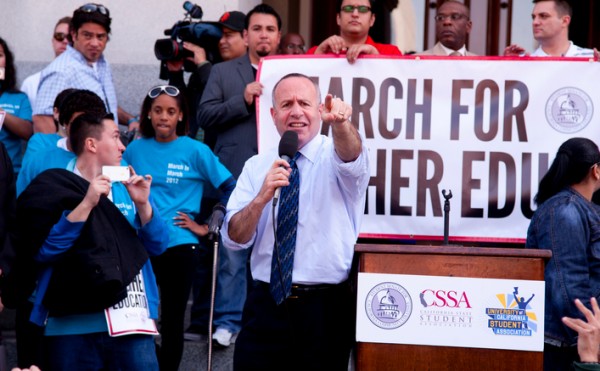Sen. Steinberg: School Funding Measures in CA are 80 Percent Complete

Previously reported on IVN, by Kelly Petty, was the struggling state of unemployment among those with just a high school education. About 24 percent of high school graduates are neither working or in college. In California, the state Legislature is hoping to restore the value of a high school diploma.
Senate President pro Tem Darrell Steinberg has led education legislation this session. This includes a $250 million push to expand vocational and career technical education under Senate Bill 594. In a discussion with the Public Policy Institute of California, Steinberg articulated the importance of SB 594:
"While we want to collapse categorical funding, I think there are a few we don't want to eliminate. There are two we're fighting for; partnership academies and the Regional Occupational Programs (ROP). One of the proposals we're making in the budget, and we're on our way to negotiating successfully, is that we want to put an additional $250 million into 'linked learning'."
Steinberg wants to create a statewide version of what Long Beach Unified has: a district-wide career technical education integrated with curriculum.
"Combining high standards, academic rigor, with career application across the board, that's what we want to do."
ROP classes provide experience outside of traditional academic curriculum for high school students. Depending on the business partnerships a district and school can provide, ROP can include automotive, agriculture, medical, and/or computer training.
Senate Bill 594 specifically creates a grant program for businesses to forge partnerships with high schools and community college districts. Grants will be awarded by a committee appointed by leaders in state government and education. Priority for grants will be given to businesses looking to expand programs in less affluent districts without a substantial ROP presence.
Although the bill has no formal opposition, concerns are still raised about businesses and companies sponsoring classes in a public school. Exposure to a single company may provide a narrow skill set specific to certain products. However, the work experience gained and possibility of workforce certification can be a solution to increasing employment opportunities and relevance of high school education.
California's unemployment rate in 2012 for ages 16-19 was at 34.6 percent, and 15.9 percent for ages 20-24. Unemployment encompasses idleness, those who are neither going to school or working at least part-time.
The bill passed the Senate unanimously last month and is now in the Assembly for consideration.
Outside of increasing availability of career technical education in high schools, Steinberg said Governor Brown's education funding proposals are "80 percent there." This is reflective of the negotiations between the Senate and the governor. The two plans are similar in the allocation of money for K-12 schools. Steinberg also supports the $1 billion investment for implementing Common Core standards throughout the state.
Watch the full PPIC discussion with Sen. Steinberg here:
http://www.youtube.com/watch?v=UorgX1s5U5g&feature=share&list=PLE43F1E7301CAC1B4




